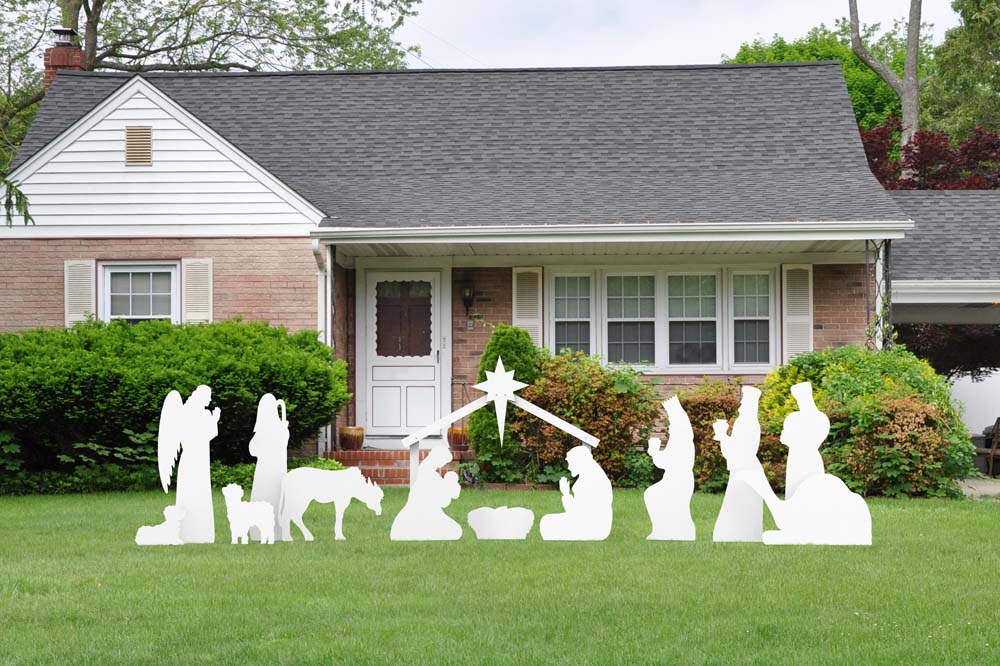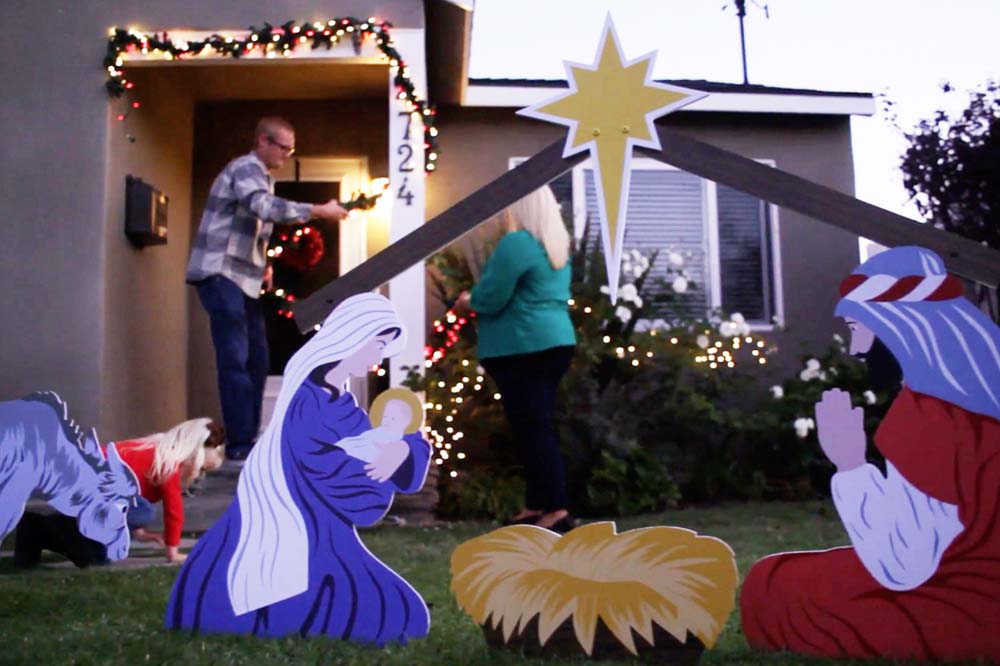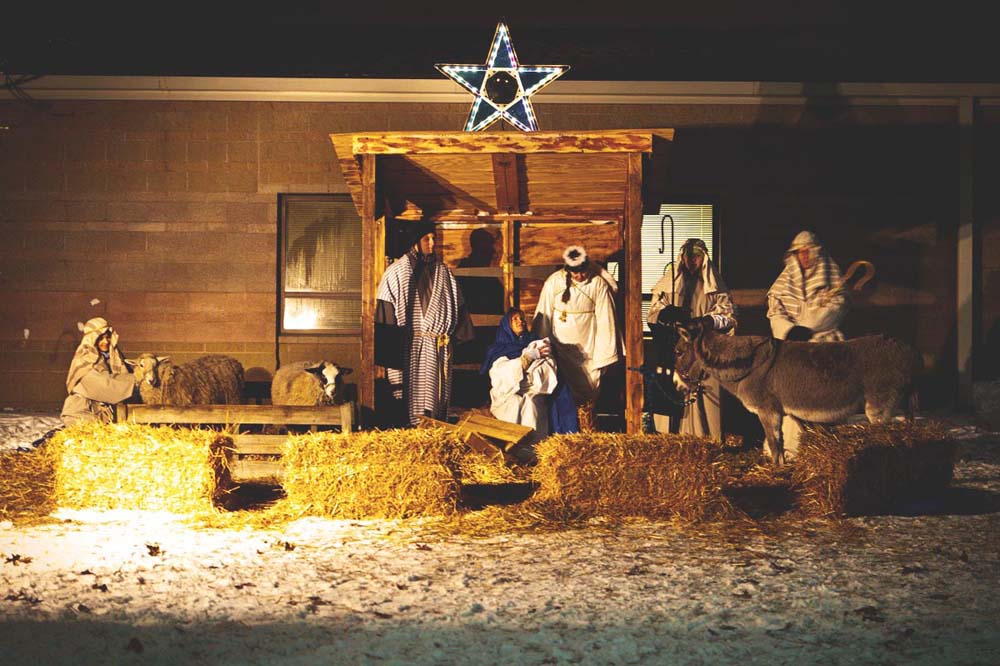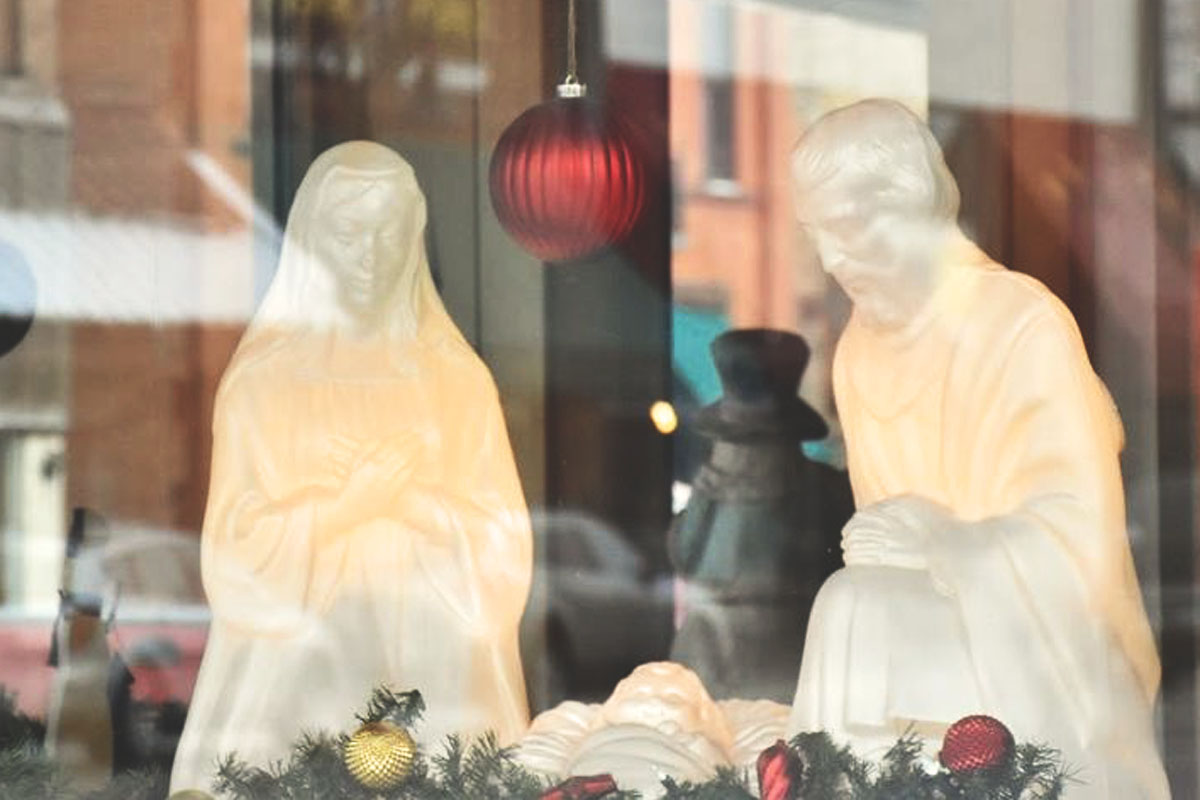What the Supreme Court Says About Outdoor Nativity Scenes
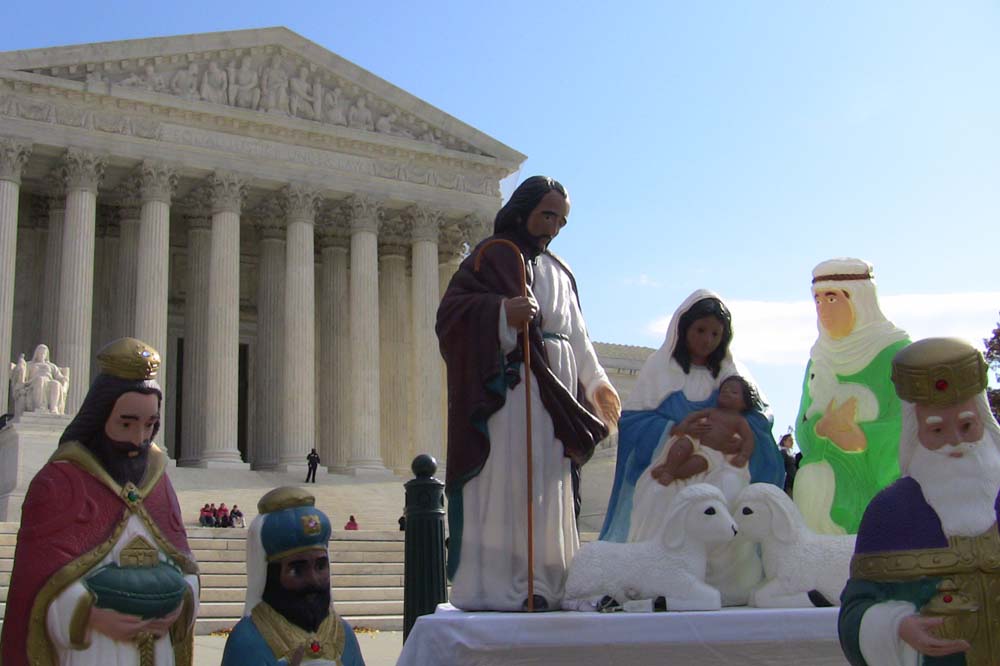
Like clockwork each winter, the debate over the display of outdoor nativity scenes on public property begins. On the news you may here about lawsuits by atheist organizations and civil liberty groups, and, sadly, even vandalism of manger scenes. It can feel like everyone wants to stop your community from presenting a crèche at the local park or town square. Fortunately, this is not the case.
According to a 2014 survey by the Pew Research Center, 72% of American adults favor allowing Christian symbols on government property in at least some cases, “either by themselves or with symbols from other faiths.”
But what do the courts have to say about outdoor nativity scenes on public property? Are they constitutional? What is the law? The United States Supreme Court has addressed the issue of government-sponsored nativity sets on two separate occasions, both during the 1980s.
Lynch vs Donnely (1984)
For many years, the city of Pawtucket, Rhode Island, like other towns across America, exhibited decorations on public property near the main shopping district during the Christmas season.
In addition to a lighted crèche, which had been displayed annually since 1943, the city’s decorations consisted of:
- Santa Claus house
- Reindeer pulling Santa’s sleigh
- Candy-striped poles
- Carolers
- Christmas tree
- Cut-out figurines, such as elephants, clowns, teddy bears
- “Season Greetings” banner
- Hundreds of colored Christmas lights
The Christmas display was first challenged in the state court of Rhode Island, and then, later, in the Supreme Court. The question was whether the government was endorsing religion with this holiday display.
A 5-4 majority upheld the city’s right to display the outdoor nativity set. The court deemed the specific holiday display acceptable because it did not promote a specific religion. According to the Supreme Court, the display recognized the holiday as well as the religious connotation.
Justice Warren Burger reminded the court about America’s religious history. Therefore, the Establishment Clause did not forbid all religious displays. The Pawtucket outdoor nativity scene showed the religious origin of the specific holiday. The city was not supporting or favoring Christianity above other religions or non-religions.
Justice Sandra Day O’Conner focused on the secular display. For her, these nonreligious figurines represented enough goodwill and commerce. By adding the crèche scene, the holiday display was not only displaying non-religious items but a combination.
Justice O’Conner established a test in this particular case to determine when a public outdoor nativity scene was constitutional. This Establishment Test became the guideline for future court cases.
The test she applied was: “Whether a reasonable person would view the government’s action as an endorsement of religion.”
In other words, if you walk past a nativity display, what will your reaction be? Will you think the government is endorsing a specific religion? Perhaps you will think the opposite, that the holiday display was non-religious or maybe as a mixture of religion and non-religion?
Five years later, this test swayed the Supreme Court’s ruling in another case involving an outdoor nativity.
County of Allegheny vs ACLU (1989)
During the 1980s, the city of Pittsburgh displayed two different holiday scenes on public property. In 1981, the Holy Name Society, a Roman Catholic group, had donated a crèche, which included an angel holding a banner with the phrase “Glory to God in the Highest.” The city proudly displayed the nativity scene outside, on the grand staircase of the courthouse.
The second holiday scene was exhibited outside the city-county office. It consisted of a menorah (owned by a Jewish group), a Christmas tree, and a sign proclaiming “salute to liberty.” No outdoor nativity set was included in the second display.
Weeks before Christmas, on December 10, 1986, the local chapter of the ACLU and seven Pittsburgh residents filed a lawsuit against the city and Allegheny County. By 1989 the case had reached the Supreme Court.
While the court’s decision was divided, the final ruling was decided according to the Establishment Test of Justice O’Conner in the Pawtucket case. The nativity scene outside of the courthouse, the most beautiful part of the building, was deemed unconstitutional. The reason was the setting as such and also that the outdoor nativity scene stood alone.
The test concluded that any reasonable person who passed by would assume the government endorsed the Good news of Jesus Christ’s birth. The disclaimer sign that stated a Roman Catholic group was the owner of the outdoor nativity scene was not convincing enough. The court believed that a passerby could still think the government supported and approved a specific religion above another.
In contrast, the outside holiday display with the Christmas tree and menorah were deemed not endorsing religion. The menorah was accompanied by other secular holiday displays. The Christmas tree was the dominant feature of this holiday display.
Justice O’Conner stated that any reasonable person would not think an outdoor nativity scene supported religion. She admitted the religious character of the Christmas tree and menorah, but she did not think a reasonable person would see the display as endorsing specifically Judaism or Christianity or a non-religion.
The Constitution’s Establishment Clause
Only five years after the favorable ruling on the Pawtucket nativity, the Supreme Court ruled against the Pittsburgh crèche. What was the difference?
Whereas the Pawtucket nativity scene included secular symbols together with the crèche, the Pittsburgh nativity displayed only the crèche. Thus, the government was seen as endorsing Christianity.
There are no clear guidelines that the lower courts can follow. The Supreme Court reviews each case on its own merits with specific emphasis on:
- What each holiday display consists of
- The specific history
Religion has played a prominent role in the history of the United States of America. This adds to the unclear guidelines of when it is constitutional and when is it not. It also gives the government leeway to sponsor religious displays.
Fortunately, the Establishment Clause of the First Amendment does not forbid private citizens to display religious scenes in public areas available to everyone.
The Establishment Clause of the Constitution’s First Amendment states:
“Congress shall make no law respecting an establishment of religion, or prohibiting the free exercise thereof; or abridging the freedom of speech, or of the press; or the right of the people peaceably to assemble, and to petition the government for a redress of grievances.”
In other words, it means that the government is not allowed to:
- Establish a religion.
- Favor one religion above another.
- Favor non-religion to religion, or the other way around.
- Forbid a religion.
When it comes to the practical application of the law, however, the borders become fuzzy. While it is clear a city cannot install religious monuments on public property, what about existing monuments? Should they be removed or not?
The Supreme Court has ruled on different situations in an attempt to clear up the confusion. In 1980, it ruled that a Kentucky law prescribing the display of the Ten Commandments in classrooms was unconstitutional.
How do you know when the beautiful lighted outdoor nativity scenes in your municipal square or in front of city hall is constitutional?
Determining the legality of Outdoor Nativity Scenes
Here are five guidelines to help evaluate whether an outdoor Christmas nativity set on public property is within the restrictions of the First Amendment Endorsement clause.
- Standalone A standalone outdoor nativity scene can send the message that your government is supporting Christianity, a specific religion. Add secular pieces and your outdoor nativity scene can be safe within the borders of constitutional law.
- Symbols Santa Clause, reindeer, elves, Peanuts characters, and Santa’s house are examples of secular holiday symbols. Menorahs, crèches, and other types of outdoor nativities that tell the story of Jesus Christ’s birth are religious symbols. Secular symbols are constitutional. Religious symbols can be either constitutional or not; it depends on how and where it is displayed and the context of the whole holiday display.
- Private Private owned outdoor nativity sets are allowed. The question arises when outdoor nativity scenes are owned by the government.
- Wording The wording of signs may be deemed religious or secular.
- Endorsement Test The setting and context of the outdoor nativity scene, along with accompanying disclaimer signs, contribute to the assumption a reasonable person will make.
The two Supreme Court cases have provided these guidelines, but have not solved the issue entirely. Courts are continually confronted with a variety of cases regarding outdoor nativity displays on city, county, or state property.
Outdoor Nativity Scenes Under Attack?
Do these persistent legal battles over the display of outdoor nativity scenes on government property spell the end of this beloved Christian tradition in American public life? Contrary.
The 1984 Supreme Court ruling inspired groups to pull out nativity scenes long thought to be unconstitutional. In December that year, the National Park Service presented a 20-piece outdoor lighted crèche purchased by a private group on the Ellipse near the White House. This was the first time a nativity was displayed on the Ellipse since 1974, the year courts ordered the outdoor manger set to be removed.
In Chicago, a group of Christians lead by Jim Finnegan display an outdoor nativity scene in Daley Plaza—in spite of lawsuits and threats from activist groups. And in 2015 when the city council of Wadena, Minnesota, was faced with a potential lawsuit and voted to remove the annual nativity display in a city-owned park, a local Facebook group managed to generate worldwide support.
